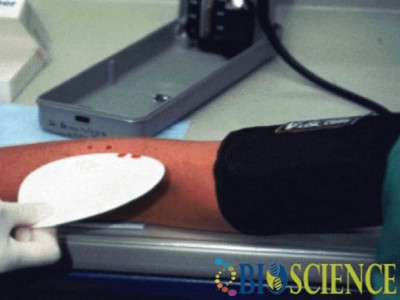Bleeding Time (BT) and Clotting Time (CT)
Discover the importance of bleeding time (BT) and clotting time (CT) in diagnosing hemostasis disorders. Learn about normal ranges, testing procedures, and what abnormal results mean for your health.

Bleeding Time (BT) is a critical diagnostic test that measures how quickly small blood vessels and platelets work together to stop bleeding after an incision. This test primarily evaluates platelet function and the body’s clotting efficiency, both of which are essential for maintaining hemostasis. Commonly used to diagnose bleeding disorders or monitor treatment effectiveness, the bleeding time test is particularly valuable in identifying conditions like thrombocytopenia and von Willebrand disease.
Clotting Time (CT) is a medical test that determines how long it takes for blood to form a clot after an injury or incision. This test assesses the body’s coagulation pathways, which are crucial for stopping excessive bleeding and promoting proper wound healing. Clotting time is especially important for diagnosing coagulation disorders such as hemophilia and for monitoring anticoagulant therapy. When paired with the Bleeding Time (BT) test, it offers a comprehensive evaluation of the body’s hemostatic mechanisms.
Together, the Bleeding Time (BT) and Clotting Time (CT) tests serve as essential diagnostic tools to assess the body’s ability to prevent excessive bleeding. These tests evaluate both platelet function and the efficiency of coagulation pathways, making them indispensable for diagnosing bleeding disorders and ensuring effective treatment outcomes.
What is Bleeding Time (BT)?
Bleeding time is a diagnostic test that measures the time required for bleeding to stop after a small, standardized incision or puncture is made on the skin. This test primarily evaluates platelet function, vascular health, and the initial stages of hemostasis, during which platelets aggregate at the injury site to form a temporary plug.
The test is conducted using one of the following methods:
- Duke’s Method
- Ivy’s Method
- Template Method
Among these, the Template method provides more reliable results compared to the Duke’s method, which is no longer widely used due to the risk of hematoma formation and lack of standardization. However, the Ivy’s method remains commonly used, especially in clinical settings.
Ivy’s Method for Bleeding Time
Principle
In Ivy’s method, three punctures are made on the volar (inner) surface of the forearm using a lancet. The time it takes for bleeding to stop from these punctures is measured. The pressure is maintained between 30-40 mm Hg using a sphygmomanometer to ensure standardized conditions.
Required Equipment
- Sterile disposable lancets
- Sphygmomanometer
- Filter paper
- Stopwatch
Procedure
- Measure the patient’s blood pressure to ensure it is within the normal range.
- Clean the volar surface of the forearm with 70% ethanol and allow it to dry.
- Make three punctures, spaced about 5 cm apart, avoiding superficial veins and scars.
- Start the stopwatch immediately after the first puncture is made.
- Absorb the blood with filter paper at 15-second intervals, without touching the wound.
- Stop the timer when blood no longer stains the filter paper.
- Record the average time from all three punctures and report it as the bleeding time.
Normal Bleeding Time Range
- 2 to 7 minutes.
- Most individuals will have a bleeding time of less than 4 minutes. If bleeding persists for more than 20 minutes, the test is stopped, and the result is reported as >20 minutes.
Prolonged Bleeding Time
Prolonged bleeding times may indicate various medical conditions, including:
- Thrombocytopenia (low platelet count)
- Von Willebrand Disease
- Platelet dysfunction disorders
- Blood vessel disorders
- Afibrinogenemia (absence of fibrinogen)
What is Clotting Time (CT)?
The clotting time test measures how long it takes for blood to form a clot when placed in a test tube at body temperature (37°C). Unlike the bleeding time test, which evaluates platelet function, the clotting time test focuses specifically on the efficiency of the coagulation cascade—a series of chemical reactions in the blood that lead to clot formation.
This test is crucial for identifying clotting factor deficiencies, which can cause abnormal bleeding or clotting disorders. However, it is important to note that clotting time is usually prolonged only in cases of severe clotting factor deficiency and may remain within normal limits in mild or moderate deficiencies.
Key Takeaways on Clotting Time
- The test evaluates the overall ability of the blood to coagulate.
- It is usually performed to diagnose conditions like hemophilia or disseminated intravascular coagulation (DIC).
- Normal clotting time in adults is typically between 5 to 15 minutes, depending on the method used.
Summary
Both Bleeding Time (BT) and Clotting Time (CT) tests provide crucial insights into a patient’s ability to prevent excessive bleeding. Bleeding time focuses on platelet function and early hemostasis, while clotting time evaluates the blood’s coagulation capacity. When interpreted together, they help diagnose and manage conditions affecting the blood’s ability to clot properly.
FAQs
What is the Bleeding Time (BT) test?
What is the Clotting Time (CT) test?
How is the Bleeding Time test performed?
What is the normal range for Bleeding Time (BT)?
What is the normal Clotting Time (CT)?
What conditions can extend the Bleeding Time (BT)?
What are the common methods to measure Bleeding Time (BT)?
What factors can affect Clotting Time (CT)?
Why is the BT test not recommended if the platelet count is low?
What are the differences between Duke’s, Ivy’s, and Template methods for Bleeding Time?
Reference(s)
- Evatt BL, Gibbs WN, Lewis SM and McArthur JR. Fundamental Diagnostic Hematology: The Bleeding and Clotting Disorders. US Department of Health and Human Services and World Health Organization. 2nd Edition. 1992.
- Lewis SM, Bain BJ and Bates I. Dacie and Lewis’s Practical Haematology. Churchill Livingstone. 9th Edition. 25 October 2001. ISBN: 9780443063770.
Cite this page:
- Posted by Dayyal Dg.